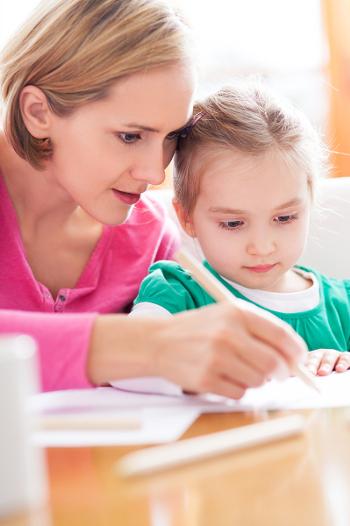Paying the bill
Duration/age

Next time you get a bill, talk about it with your child. What is it for? It might be for work you had done, something you ordered online or from when you last ate out as a family.
Explain that the purchase or service received will be described using words, symbols and numbers. These help to tell you how much you have to pay, what you are paying for, when you need to pay and the quantity you are buying.
This is the bill for dinner. It says that we ate 3 serves of fish and chips, 1 serve of pasta, an entree of squid and a bottle of sparkling water.
The plumber left a bill for fixing the toilet. There are 3 different amounts on the bill. It has the call-out fee, the work completed and the parts to fix the toilet. The bill says we need to pay the total amount within 7 days.
Materials you will need
- A bill
Skills this activity improves
Why does this matter?
Talking to your child about the cost of an object helps them to develop an understanding of money as a form of measurement. As you talk about the bill and the different costs included, your child can begin to sort and group objects by price, quantity and amount.
Exploring the bill with your child helps them to see that there are different ways a price is calculated. The cost of an object might be calculated by size, number, per hour or a fixed amount.
What does this lead to?
Exploring the cost of an object or the total amount of a bill helps your child to develop language to describe the different forms of measurement and the processes related to money.
By reading the bill together your child can begin to sort and group objects by cost. Sorting and grouping objects helps them to make predictions and explore how objects can be divided into smaller parts.
“The whole job will cost $500. If we only paint 1 room and leave the other 3 rooms it will cost less.”
“Last time we ate here it cost us $50 for the whole family. I think it will only cost $25 as only half the family are here.”
Language to use
- Money
- Cost, amount, total
- Quantity, number
- Time, hour
- Pay
- Due date, pay by
Questions to use
- Is that the total amount?
- When do we need to pay that by?
- How many meals did we order?
- Did all the meals cost the same amount?
- Will a small serve of pasta cost the same as a large serve?
Useful tips
- Money is a very tricky concept for children to grasp, as it is so abstract. Try to talk about the real cost of something rather than a made-up amount.
- Use real examples when comparing the cost of an object, such as ‘an apple costs less than a car'.
- You might also like to take a look at the activity How much is that?
- Remember to talk to your child in your home language.
More ideas
Create your own bills for jobs done around the house.
Variation by age
Three to five year olds
- Ask your child to find the different numbers on the page.
- Use the takeaway menu to try and predict how much your bill will be before you collect your order.
- Set up a pretend shop at home. Create bills for the different products you can buy.
Questions to ask
- Is a 5 bigger than a 2?
- Will a big tomato cost more than a punnet of small ones?
- Will 2 entrees cost more than 1 main meal?
- Why are there numbers at the top and bottom of the page?
Language to use
- Money
- Cost, amount, total
- Quantity, number
- Time, hour
- Pay
- Due date, pay by


